How Do I Add Gmail Icon To My Home Screen
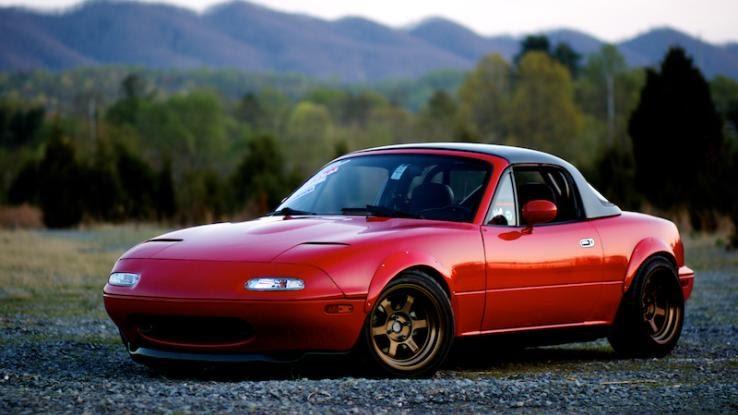
Cars take changed a lot over the years, merely one thing about them remains the same — people dear iconic makes and models. Each decade had its own versions of the car that won out over the remainder, and many machine manufacturers improved upon previous designs to make new cars that much better and entice consumers. As the decades went on, new designs, drive styles and torso types were introduced, only some have stood the test of time better than others.
Dodge Brothers Model 30, 1914
John and Horace Dodge became car-manufacture pioneers when they created Dodge Brothers Company in 1914. They grew upwardly in an automotive family unit working at their father's shop, so they got off to a good start when it came to designing and producing cars.

The two went on to start the well-known Dodge brand and subsequently introduced the Contrivance Brothers Model xxx. The classic sedan was the get-go iv-door vehicle with a steel roof. The sedan was the last car John Dodge owned before his expiry in 1920.
Starting in the early years of the automobile, Chrysler made vehicles that were designed to exist both reliable and stylish. In 1926, the company released the Purple 80, a auto that was meant to make a competitive mark on the auto industry.
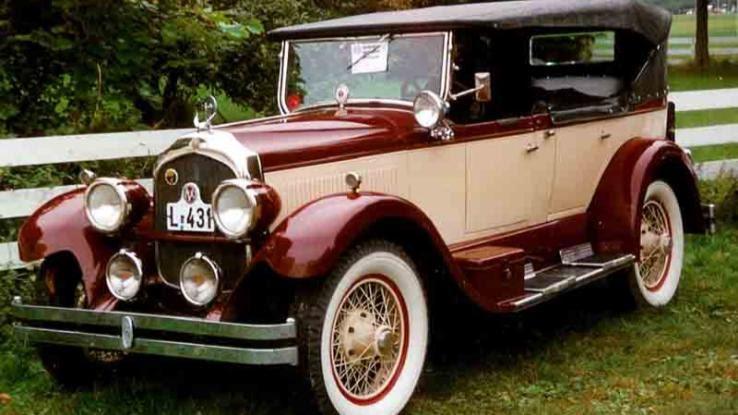
Luxury vehicles like those from Cadillac and Lincoln were popular at the time, but upon release of the Imperial 80, information technology was obvious that Chrysler had come to win. The car had a six-cylinder engine that had 92 horsepower, and Chrysler was so confident that the Imperial was worth buying that information technology offered a speed guarantee on the vehicle.
Lancia Lambda, 1923
Lancia is a car manufacturer based in Italy that'southward been around since 1906. The motorcar visitor pioneered the sports tourer with its Lancia Lambda in 1923. The car was the start to offer an contained front suspension system and a V4 engine.

Lambda was style alee of its time in the car-manufacturing business organisation, offering avant-garde engineering for the weight of the car, the types of materials used and the structure formats that differed from the typical cars of the time. Lancia became a part of the Fiat Group in 1969 and is now known as Lancia Automobiles.
Rolls Royce Phantom I, 1925
Rolls Royce has become synonymous with luxury and affluence over the years — and for good reason. The cars are generally sought after by the rich and famous, and brides and grooms often use them as hymeneals limousines. In 1925, Rolls Royce introduced the Phantom I, a replacement for its popular xl/l Silvery Ghost.

The Phantom I had a much better engine than its predecessor at 7.7 liters and six cylinders. It as well had disc brakes, which were fairly new at the time. Its elegant, modern blueprint was a welcomed upgrade from previous Rolls Royce models.
Bentley eight Litre, 1930
Perhaps no auto make is as widely recognized for being a luxurious status symbol quite like a Bentley is. Back in 1930, Bentley launched its very last car before Rolls Royce purchased the company: the Bentley 8 Litre.

The vehicle ran at 230 horsepower, and fifty-fifty with all the rich touches in its design, it could hit speeds of over 100 miles an hour. The auto was personally vouched for by Westward.O. Bentley himself when he told the public that the ride would exist silent, even while running at top speeds.
Ford Roadster, 1932
The Ford Roadster was arguably the motorcar that started the hot rod trend among Americans and other car enthusiasts around the globe. The car was the main actor in speed and drag racing considering of its V8 engine and accessibility that allowed mechanics to easily modify information technology.

The popularity of the car can be attributed to its great racing abilities only also to its cheap cost tag. It also had both five-window and three-window suicide door options. The Beach Boys' hit song "Little Deuce Coupe" helped secure its popularity about three decades after the first Roadster came off the line.
Pierce Silver Pointer, 1933
The futuristic look of the Pierce Silver Arrow was something people marveled at when information technology was released in 1933. It boasted enclosed fenders, and the swooping bodywork was unlike anything anyone had always seen in motorcar product.

The unique car had a V12 engine, which was rare at the time, and could hit speeds of upward to 115 miles per 60 minutes. At the time the automobile price $10,000, which, accounting for inflation, would exist almost $200,000 today. It's no wonder that merely a few of the cars were ever produced.
Cadillac V16, 1938
There'due south a reason why people use the proper noun Cadillac to describe something that's the all-time of the all-time. The motorcar company started stiff and has kept it upwards. Dorsum in 1938, information technology introduced the powerful Cadillac V16, a cute and heavy car that striking the pinnacle of popularity presently after its release.

The smooth ride that the V16 engine provided was one of the primary draws when information technology came to purchasing a Cadillac back in the twenty-four hour period. The visitor's utilise of this engine lasted until the 1940s when it replaced that engine with a V8 on all Cadillac models.
Buick Century, 1941
The Buick Century was once ane of America's virtually powerful vehicles to hit the road. The automobile could hit speeds of over 100 miles an hr — with a well-nigh comfortable cruise at 80 miles an hour — and got power from an viii-cylinder engine with 165 horsepower.

Buick's brand reputation, even today, owes the Century some gratitude. If it wasn't for this specific machine, it's not certain that Buick would've ever been able to make functioning 1 of its major selling points. The Century was released in a fleet with half dozen other models.
Lincoln Continental, 1942
Lincoln's production was put on agree during WWII, but that wasn't earlier it released the Continental with a slightly new design that included front-end sheetmetal. Well-nigh of the Lincolns released earlier the war didn't vary much from their predecessors, but the Continental was decidedly unlike.
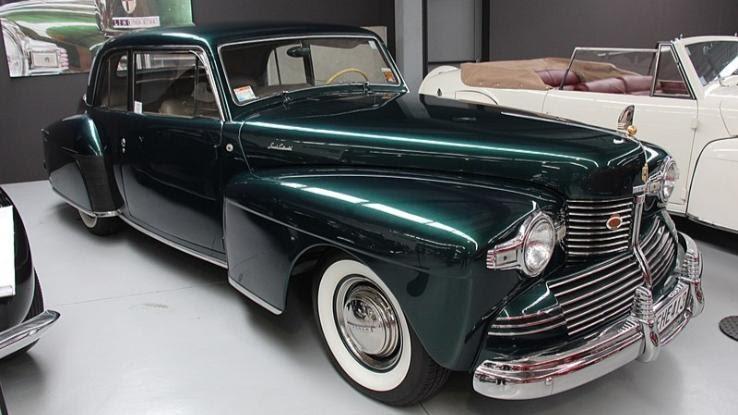
The V12 engine didn't surpass other powerful cars of the time, simply with its 292-cubic-inch engine, information technology sure stood out. Apparently fewer than 140 of these cars were ever made, so their rareness is something that helped secure their popularity.
Chevrolet Fleetmaster, 1947
Perchance one of the about recognizable cars on the listing is the Chevrolet Fleetmaster. Although it didn't have much of a style alter from the previous model, information technology did take some 1930s designs and update them a little bit to brand this 1 of the most sought-after convertible cars of the decade.
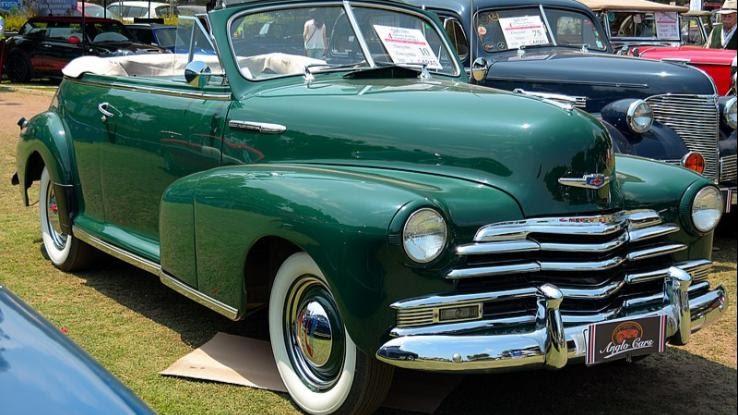
Over 600,000 Fleetmasters were sold in America in 1947, showing that they were on everybody'due south car wish list that twelvemonth. Its classic looks and reliable engine fabricated for a motorcar that offered both new excitement and familiar comfort.
Mercury 8, 1949
When the custom-automobile culture of the '40s took over for machine-heads across America, the Mercury viii was a tiptop choice. The design and composition of the car had drastically changed from its predecessor, which made information technology that much more desirable among auto lovers.

The Mercury 8 offered a new flathead V8 merely kept the aforementioned peaked hood and wicked fenders that information technology had in years prior. The car was and then popular that its fame still lives on today for hot rodders — some of whom spend upwardly of $l,000 just to update and alter these vehicles.
Volkswagen Beetle, 1950
The 1950 Beetle was a vast comeback on the older versions of the classic automobile, which was released in the tardily 1930s, and the 1950 version saw a ascent in sales by over 100%. Over the years since its release, the Beetle has gone on to become one of the best-selling cars in history.

Volkswagen is now one of the biggest auto companies in the world, and for good reason. The reliable High german engineering and sleek and updated styles that information technology continues to release are just a couple of the reasons why VWs are so popular.
Chevrolet Corvette, 1953
Even people who don't care much about cars know well-nigh the Chevy Corvette. The car has been pushed in pop civilization and became a classic most instantly upon its release. This was the first "sports car" in American-made history, and it became a staple on the roads in the U.South.

The 1953 version of the 'Vette had a six-cylinder engine with a soft tiptop for those hot summer days. The side windows were actually detachable, and it was lightweight, made of fiberglass. 1953 was the get-go twelvemonth of sales for this iconic car — and it but came in a color called Polo White initially.
Chevrolet Bel Air, 1957
Fifty-fifty in the 1950s, this was a surefire contender for car enthusiasts everywhere. Saying it was a beautiful accept on automobile blueprint even back then was a complete understatement.

The fins on the 1957 Bel Air were the largest in Bel Air history, and the choice between convertible or sedan made the automobile that much more than desirable. The V8 engine was and so powerful that, had the term "muscle car" existed at the time, the Bel Air would've been the all-time muscle car around.
Studebaker Avanti, 1962
The Studebaker Avanti is one of the rarer luxury coupes e'er made. Fewer than v,000 of the cars were manufactured, and the lifespan of the motorcar was reportedly but a yr. The Avanti was originally marketed to the public every bit "the only 4-passenger high-performance personal car."

The Avanti's body was made of fiberglass, and the design was revered among car enthusiasts. The car'due south safety rating was off the charts, and information technology offered high speeds with its 289 Hawk engine and supercharger.
Pontiac GTO, 1964
The '60s were the beginnings of the American muscle automobile, and the GTO kicked that era off with its loftier horsepower and modest trunk design. The V8 engine was 1 of the most powerful at the time. The car also had hood scoops, even though they weren't functional initially.

With its firm suspension and custom tires, the GTO was a performance car that set the standard for others to follow. The way of the car was popular, of class, merely the thrilling speed it offered had buyers waiting in line for their take chances to bulldoze one.
Porsche 911, 1965
But about anything from Porsche is many a car lover'southward dream. This particular luxury model has been making waves since its conception. When the Porsche 911 was released, it was the start of the automobile company's long reign over the manufacture; the 911 set a standard for racing.
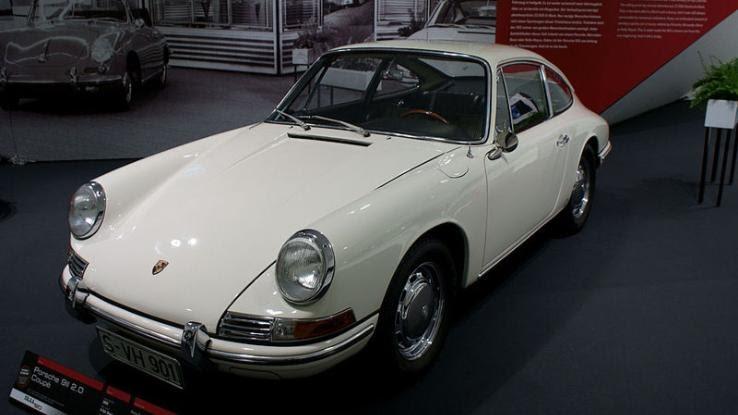
In the beginning, the apartment engine wasn't all that impressive, just when the 911 was released, information technology came with a bigger, more powerful engine. This immune Porsche to hit the market running and go enthusiasts interested in the stylish and fast racing powerhouse. New versions of the 911 have been released yearly since 1965.
Stutz Blackhawk, 1970
The Stutz Blackhawk was the perfect example of 1970s style. The Italian car was produced on an American chassis, and it was the paradigm of luxury, costing buyers upwards of $thirty,000 for the cheapest option. With inflation, that would be over $200,000 today. Simply nearly 600 of the cars were ever made.
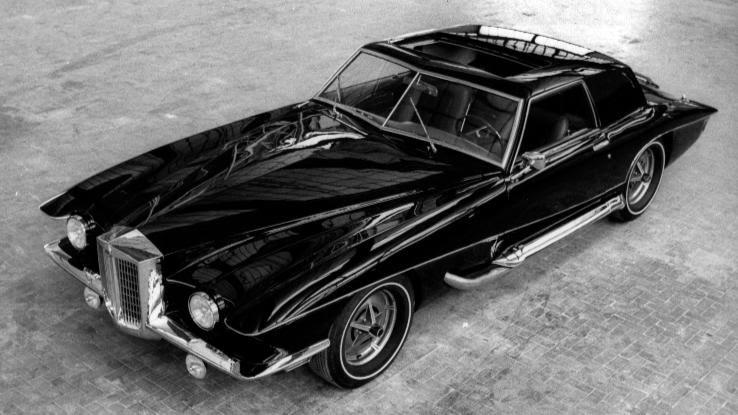
The Stutz Blackhawk was a famous-people car, and owners included Johnny Cash and Elvis. The cool factor of the motorcar coupled with its hefty price tag gave the vehicle its infamy, and it soon became a status symbol for anyone who could afford it.
Ford Ranchero, 1972
The Ford Ranchero was the 1970s' version of a lovechild betwixt the pick-up truck and the sporty sedan. The pick-up cars were made to haul and cruise, and people loved the way they drove, along with their appearance, at the time.

The Ranchero ran on a V8 engine, and then information technology got a good corporeality of power for its day. The 1972 version wasn't the first ever made, but it was the most popular considering of its blueprint and cargo-carrying capabilities. It was the perfect combination of a selection-up truck, fashionable sedan and station wagon.
Pontiac Trans Am, 1977
The Pontiac Trans Am ruled the 1970s when it came out. Pop culture took the car and ran with information technology. The car was featured in the movie Smokey and the Bandit, making information technology more famous than information technology already was. The front decal of a "screaming chicken" fabricated information technology a standout on the road.

The Trans Am ran on a 6.6-liter V8 engine with an choice that offered 200 horsepower. The handling of the Trans Am was top notch, and information technology rivaled its competition, winning over the hearts of every muscle auto lover in the United States.
DeLorean, 1981
Anybody who's anyone will recognize the DeLorean equally the fast, time-traveling car from the hit film Back to the Futurity. The butterfly doors, the cool boxy style and the fact that it could fourth dimension-travel (in the moving-picture show) made the car an iconic '80s staple.

Earlier it was in the movie, the DeLorean had a hard fourth dimension making a name for itself amidst tough competitors such equally Ferrari and Porsche. With an engine with only 130 horsepower, there's a reason it didn't match faster cars of the time. It's all the same the famous DeLorean, though.
Volkswagen GTI, 1983
Some other Volkswagen on the listing is the GTI, the beginning hatchback made to be a sporty culling to common four-door automobiles of the time. The car was cheap for its day, costing buyers less than $10,000. That made buying of the cool compact easy and affordable.
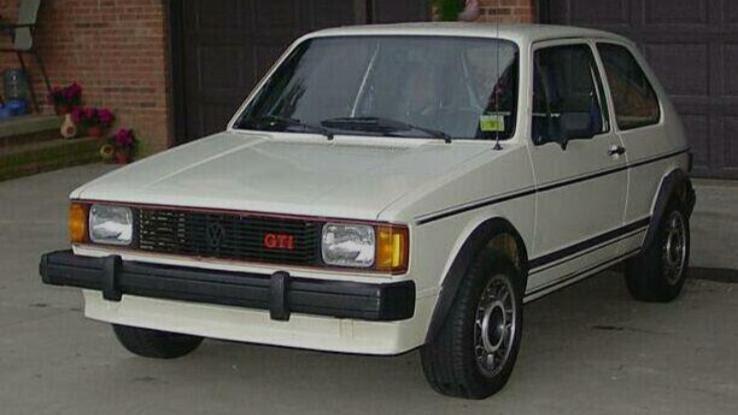
The GTI also offered upgrades from its predecessor, the Rabbit, such every bit firm intermission and bigger tires. It only had 90 horsepower, simply its speed wasn't an consequence because of its small-scale size. Its diminutive proportions were something new back when it was released, and people loved the GTI'south new style.
Ferrari Testarossa, 1985
Another iconic automobile that was fabricated famous past popular culture, the Ferrari Testarossa was featured in the hit TV testify Miami Vice. The advanced vehicle was so far ahead of its time that it was nearly impossible to believe Ferrari had achieved such a feat.
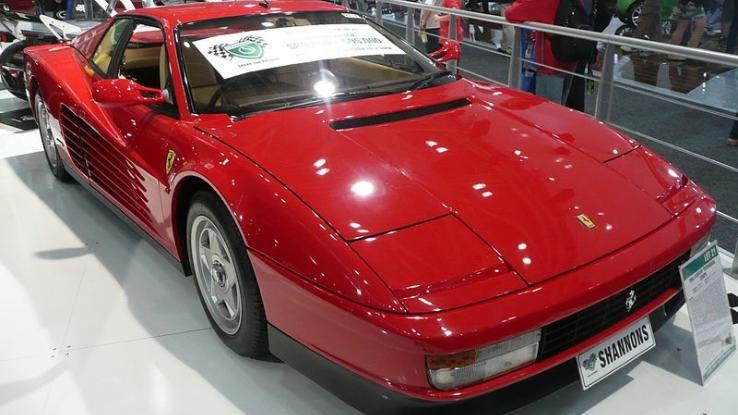
The car ran on a 12-cylinder engine and information technology was a speedster, reaching 60 in fewer than 6 seconds. The speed mixed with its unique way made information technology an icon waiting to happen.
Mazda Miata, 1990
Taking a folio out of the classic European roaster'due south book, the Mazda Miata showed up in 1990 with a truly unique await and feel. The handling of the automobile was top-notch when it was released, and at under $14,000, it wasn't also expensive for the everyday commuter.

After its release, information technology became the tiptop option in cars for racing enthusiasts because of its lightweight body and speed abilities. The Miata was so well made and then unique that it'southward arguably notwithstanding in its own class.
Porsche Boxster, 1997
The inspiration for this car'southward design came from the 550 Spyder, and it measured up nicely. It was designed to innovate to people the thought of driving a sports motorcar without having to go full speedster.

The Boxster had 201 horsepower, which gave it the desired speed needed to zilch around tracks or country roads. In 2006, a hardtop version of the Boxster called the Cayman was introduced, and it took the vehicle's classic style and fabricated it new all over again.
Pontiac Aztek, 2000
The Pontiac Aztek might not be the coolest car on the list, but that doesn't brand it any less iconic. The crossover was supposed to be a shining lite in the world of SUVs, but it simply didn't hit the mark. People didn't like its looks or driving abilities.

It ran on a measly 185 horsepower — way too small for its size. People didn't love the drivability of the Aztek, and they hated the fashion it looked even more. Regardless of its lack of success, the Aztek still remains a highly recognizable crossover today considering of its pattern.
Audi R8, 2006
Audis are typically marketed as high-end, luxurious sports cars, and the Audi R8 was no different. Its predecessor didn't print because information technology resembled a VW Golf more than than annihilation else. But with the R8, the manufacturers decided to employ a chassis that was more in line with a Lamborghini.

The V8 engine ran on a whopping 420 horsepower, which fabricated the "supercar" more than fun to bulldoze than a lot of its competitors. It became both a leisure sports car and a daily driver because not only was it fast and powerful, only it was as well a dream to maneuver.
Tesla Model South, 2012
When the Tesla Model Due south arrived on the scene, it was the showtime car made without inspiration from whatever other automobile that came before information technology. This electric car was unique in almost every aspect, and the style fabricated all other electric cars expect, well, pretty dull.

The driving range of the Model South made it possible for owners to hit the road much longer in this car, getting around 265 miles on a unmarried charge. The Model South inverse the electrical-vehicle game and offered high-tech options that other cars but didn't have.
Tesla Model 3, 2018
Tesla is actually making a name for itself in the electrical-vehicle industry, and the Tesla Model 3 is a perfect example of an icon of the road. The sport sedan offers a 300-mile range on a single charge — at an affordable toll tag to kicking.

Handling on the sports automobile is astonishing, taking but a few seconds to reach 60-mile-an-hour speeds. The initial release saw only 2,000 Model 3s congenital, then their exclusivity matched that of Tesla'southward previous models, but increasing production in contempo years has made more of these cars readily available.
How Do I Add Gmail Icon To My Home Screen,
Source: https://www.life123.com/article/the-most-iconic-cars-ever-made?utm_content=params%3Ao%3D740009%26ad%3DdirN%26qo%3DserpIndex&ueid=454a7318-e3c8-48a2-89b9-aea53b85caa4
Posted by: harrisfroplithe.blogspot.com


0 Response to "How Do I Add Gmail Icon To My Home Screen"
Post a Comment